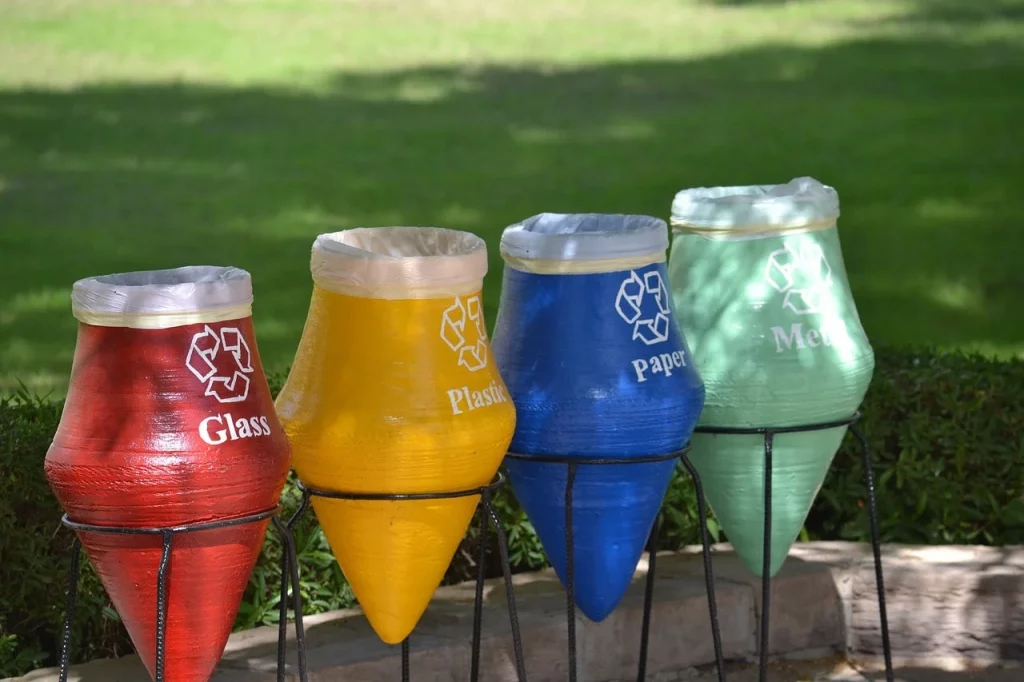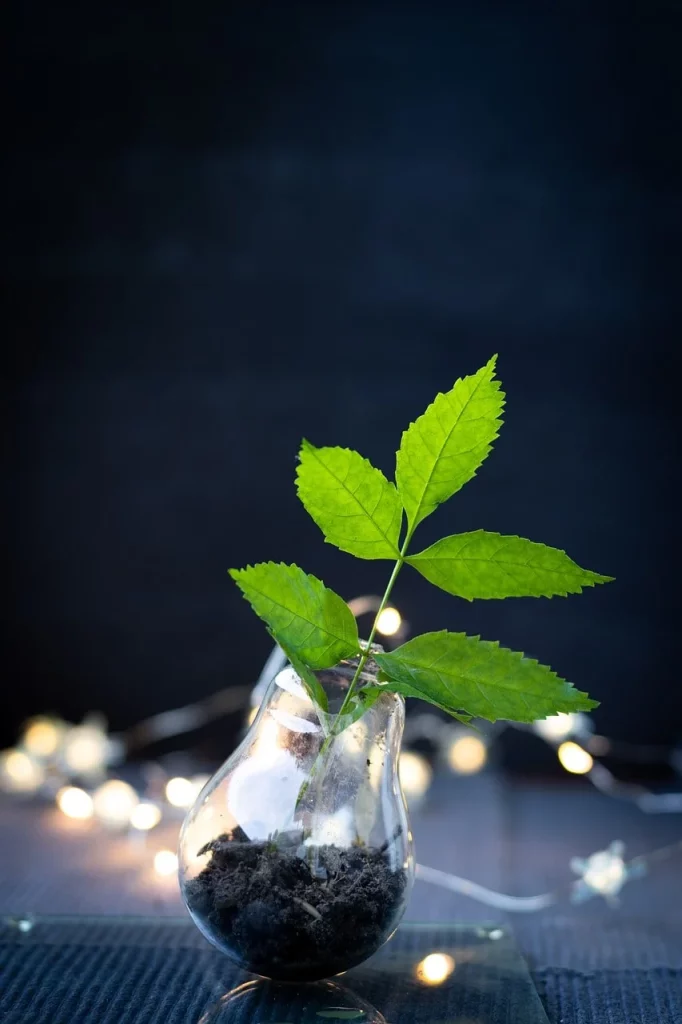In the face of climate change and environmental degradation, recycling emerges as a critical key to unlocking a sustainable future. But how much do we really know about this process?
I’m going to present some compelling facts about recycling, designed to enlighten and motivate a general audience to embrace recycling with renewed vigor. By understanding the science, the challenges, and the profound benefits of recycling, we can all contribute to a healthier planet and a brighter future for generations to come.
The greatest threat to our planet is the belief that someone else will save it.
Robert Swan
Recycling Facts
Embark on a journey through the pivotal facts of recycling, where every bit of information contributes to a larger understanding of environmental stewardship. Read carefully, because I have a quiz waiting for you at the end of this page.
- Powering a computer for 25 minutes can be achieved by recycling just one glass container.
- A single recycled aluminum can provide enough energy to illuminate a 100-watt light bulb for four hours.
- 80% of an automobile can be repurposed, underscoring the potential of recycled car components.
- Each year, the U.S. discards around 9.4 million tons of electronic equipment, most of which could be reprocessed or reused.
- Plastic shopping bags, which take up to 1,000 years to break down in dumps, can be transformed into new items such as plastic lumber.
- Recycling one ton of paper conserves 17 full-grown trees, 7,000 gallons of water, and 4,100 kilowatt-hours of electricity.
- Every year, we generate around 300 million tons of plastic rubbish worldwide, equivalent to the total weight of the human population.
- Despite the impact of plastic on environmental pollution, global recycling rates for it remain under 10%.
- Steel stands as the planet’s most reused material, with some nations achieving a recycling rate of over 85%.
- Making paper from recycled materials emits 73% less air pollution compared to producing it from virgin resources.
- Recycled aluminum can reappear on the store shelf as a new can in just 60 days.
- Repurposing textiles reduces the demand for landfill space, as synthetic fabrics do not decompose and wool products emit methane as they degrade.
- The energy conserved by recycling one million laptops is enough to power 3,657 American homes for a year.

- Only 75% of the energy required to manufacture new cardboard is needed to recycle old cardboard.
- In the U.S., about 1 billion trees worth of paper are discarded annually.
- By recycling one ton of paper, we save 3 cubic yards of landfill capacity.
- Recycling aluminum conserves over 90% of the energy needed to produce new aluminum from raw ore.
- 70% less energy is needed to recycle paper compared to manufacturing it from scratch.
- Turning 5 plastic bottles into recycled fiber can fill a ski jacket or cover one square foot of carpet.
- Electronic waste constitutes 2% of trash in U.S. landfills but accounts for 70% of the total toxic waste.
- The world’s largest dump, found in the Pacific Ocean and comprised mostly of plastic, is twice as large as Texas.
- Recycled steel from North America within a year is sufficient to construct over 900,000 automobiles.
- A glass jar can travel from the recycling bin back to the retail shelf in as little as 30 days.
- Recycling one ton of plastic containers saves enough energy to power a two-person household for one year.
- Upcycling transforms waste materials into new materials or products of higher quality or environmental value.
- Paper recycling’s earliest recorded instance traces back to Japan in 1031.
- Recycling one ton of cardboard saves more than 9 cubic yards of landfill space.
- Every hour, 2.5 million plastic bottles are used by Americans, with a majority not being recycled.

- Compared to virgin paper production, recycled paper results in 70% less pollution.
- The energy saved by recycling one glass bottle can light an old 100-watt incandescent bulb for 4 hours and an energy-efficient LED bulb for much longer.
- An aluminum can could take 500 years to decompose in a landfill, yet it can be infinitely recycled without degrading in quality.
- Recycling tires converts discarded tires into various products, ranging from rubberized asphalt to surfaces for playgrounds.
- Old newspapers can be reused to create insulation material, packing material, and even new newspapers.
- About 50% of the average household’s waste could be composted instead of landfilled.
- Each year, over 100 million mobile phones are discarded in the U.S., but less than 20% are recycled.
- Gold retrieved from recycled electronics is used in new devices and jewelry, diminishing the demand for freshly mined gold.
- From less than 10% in 1980, recycling rates have surged to more than 34% today.
- Only around 1% of textiles are repurposed into new clothing, indicating significant room for improvement.

- Manufacturing with recycled materials cuts energy consumption by up to 30% compared to using raw inputs.
- Recycling an area of carpet as large as a football field saves approximately 700 gallons of water.
- LED bulbs, which can be recycled, are at least 75% more energy-efficient and last 25 times longer than traditional bulbs.
- Recycled plastic is utilized to craft furniture, decks, playground equipment, and new plastic containers.
- Utilizing recycled glass slashes air pollution by 20% and water pollution by 50%.
- Metal recycling can reduce greenhouse gas emissions by up to 500 million tons.
- More than 90% of all shipped products in the U.S. are contained in cardboard, which is entirely recyclable.
- Recycling one ton of plastic conserves the energy equivalent of two people working full-time for a year.
- Recycling efforts worldwide help prevent the release of millions of tons of carbon dioxide equivalents into the atmosphere, aiding in the fight against climate change.
- Not only does recycling save resources, but it also creates employment, with over 1.1 million people in the U.S. working in the recycling and reuse industries.
- Waste-to-energy processes convert non-recyclable waste materials into usable heat, electricity, or fuel through various methods, including combustion and gasification, among others.
- Decomposing in a landfill takes 500 years for an aluminum can, yet it can be endlessly recycled without degrading in quality.
Recycling Myths

Ever hear something fishy about recycling? We’re busting those myths and keeping your efforts on track.
- Recycling Uses More Energy Than It Saves
Although the recycling process requires energy, the amount of energy saved by using recycled materials instead of raw resources is significantly higher. For instance, recycling aluminum cans saves up to 95% of the energy required to make the same amount of aluminum from its virgin source. - All Plastics Are Recyclable
Not all plastics are created equal in the recycling world. Specific facilities are often required for different types of plastics. It is generally observed that plastics marked with resin codes 1 (PET) and 2 (HDPE) are widely accepted at recycling centers, while others may not be. - Recycled Paper Is of Lower Quality Than Virgin Paper
The quality of recycled paper has seen remarkable improvements over the years. Today, recycled paper is produced with a quality that is comparable to virgin paper, and it is used widely for printing, writing, and packaging purposes. - Recycling Is Only Beneficial for the Environment
Beyond environmental benefits, it also offers economic advantages. By creating jobs in the recycling and manufacturing industries and conserving resources, recycling is seen as an integral part of a sustainable economy. - You Can’t Recycle Items with Food Residue
While cleanliness is important, small amounts of food residue on recyclables, such as pizza boxes, are not always a problem. Many facilities have systems in place to handle minor contamination. However, it is encouraged that items are rinsed to reduce contamination and improve the recycling process.
No products found.
Recycling Quotes

Let’s continue our journey with some quotes from notable figures. Feel free to share more in the comments so I can add them to the list.
We do not inherit the earth from our ancestors, we borrow it from our children.
Native American Proverb
This Native American proverb highlights the importance of sustainability and stewardship for future generations.
Recycling, packaging, businesses are changing all of those things because that’s what consumers want.
Jerry Greenfield
Jerry Greenfield, co-founder of Ben & Jerry’s, points out the evolving business practices in response to consumer demands for sustainability.
Waste is a design flaw.
Kate Krebs
Kate Krebs, an environmental advocate, underlines the concept that waste should not exist if products are designed properly.
There is no such thing as ‘away’. When we throw anything away it must go somewhere.
Annie Leonard
Annie Leonard, author and creator of “The Story of Stuff”, challenges the notion of ‘away’ and reminds us of the impact of our waste.
Recycling turns things into other things. Which is like magic.
Unknown
This quote, though attributed to an unknown source, whimsically captures the transformative power of recycling in a simple yet profound way.
Recycling FAQ

Got the quotes down? Now, before the quiz tests your recycling IQ, let’s clear up any confusion with our FAQ section. Remember, knowledge is power!
- Why should recycling be mandatory?
Making it mandatory helps reduce waste in landfills, conserves natural resources, saves energy, and decreases pollution. When we recycle, we give materials a second life, reducing the need for new raw materials and the environmental damage associated with their extraction and processing. - How does recycling save energy?
It saves energy by reducing the need to extract, transport, and process raw materials, which is often more energy-intensive than the recycling process. For example, recycling aluminum cans saves up to 95% of the energy required to make the same amount of aluminum from its raw source, bauxite. - Which recycling business is most profitable?
Electronic waste (e-waste) recycling is often considered the most profitable recycling business. This is due to the high demand for precious metals like gold, silver, and copper found in electronics. Properly recovering and recycling these materials can yield significant returns. - Can all plastics be recycled?
Not all plastics are recyclable in the traditional sense. While technically most plastics can be recycled, the feasibility and cost-effectiveness depend on the type of plastic, local recycling capabilities, and market demand for the recycled material. Typically, plastics labeled #1 (PET) and #2 (HDPE) are widely recycled. - What items are commonly mistaken for recyclable but aren’t?
Items often mistakenly thrown into the recycling bin include plastic bags, coffee cups, greasy pizza boxes, and certain types of glass, like window panes or mirrors. These items can contaminate recycling streams, making the process less efficient and more costly.
No products found.
Recycling Trivia

Welcome to our ultimate recycling quiz! If you don’t manage to recycle your knowledge correctly, you might find that your next coffee magically turns into decaf!
Conclusion
To sum up, recycling is a key piece of the puzzle in our quest for a sustainable future. It reduces the need for new materials, cuts down on pollution, and saves energy. Plus, it’s something everyone can do. From kids to grandparents, we all can play a part in this vital effort.
Let’s keep pushing ourselves to recycle more and waste less. It’s not just about saving the planet—it’s about ensuring a better world for all. So, let’s roll up our sleeves and get recycling. Every action counts! Till next time, stay curious. Cheers.
4 Sources Used For This ArticleRecycling Facts – Recycling Bins
Prevalent Myths About Recycling – Curious Desire
Why is Recycling Important? – Benefits Of Recycling


